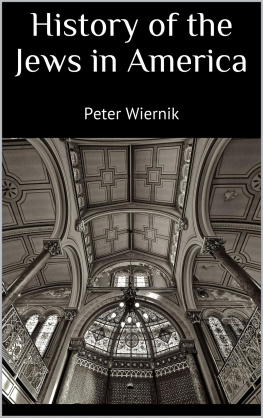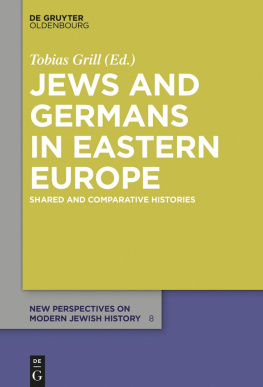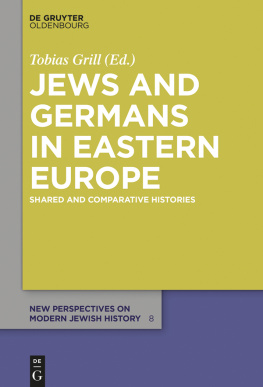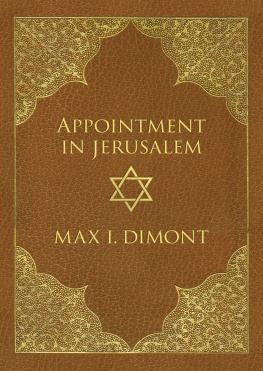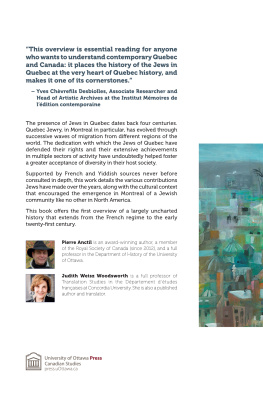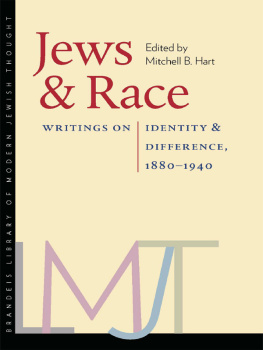History of the Jews in America
PREFACE.
There were less than ten thousand Jews in the New World threecenturies after its discovery, and about two-thirds of them livedin the West Indies and in Surinam or Dutch Guiana in South America.While the communities in those far-away places are now larger inmembership than they were at the beginning of the NineteenthCentury, their comparative importance is much diminished. The twoor three thousand Jews who lived in North America or in the UnitedStates one hundred years ago have, on the other hand, increased tonearly as many millions, the bulk of them having come in the lastthree or four decades. On this account neither our conditions norour problems can be thoroughly understood without the considerationof the actual present. The plan of other works of this kind, todevote only a short concluding chapter to the present time, or toleave it altogether for the future historian, could therefore notbe followed in this work. The story would be less than half told,if attention were not paid to contemporary history.
The chief aim of the workthe first of its kind in thiscomplete formbeing to reach the ordinary reader who is interestedin Jewish matters in a general way, original investigations andlearned disquisitions were avoided, and it was not deemed advisableto overburden the book with too many notes or to provide abibliographical apparatus. The plan and scope of the work are selfevident; it was inevitable that a disproportionately large partshould be devoted to the United States. The continuity of Jewishhistory is made possible only by the preservation of our identityas a religious community; local history really begins with theformation of a congregation. Each of the successive strataof
immigration was originally represented by its own synagogues,and when the struggle to gain a foothold or to remove disabilitieswas over, communal activity was the only one which could properlybe described as Jewish. Economic growth could have been entirelyneglected, despite the present day tendency to consider everypossible problem from the standpoint of economics. But the materialwell-being of the Jews of the earlier periods was an importantfactor in the preparation for the reception and easy absorption ofthe larger masses which came later, and this gives wealth a meaningwhich, in the hands of people who are less responsible for oneanother than Jews, it does not possess. The Marrano of theSeventeenth or the Eighteenth Century who brought here riches farin excess of what he found among the inhabitants in the placeswhere he settled, would probably not have been admitted if he cameas a poor immigrant, and his merit as a pioneer of trade andindustry interests us because he assisted to make this country aplace where hosts of men can come and find work to do. Without thisonly a small number could enjoy the liberty and equality which anenlightened republic vouchsafes to every newcomer withoutdistinction of race or creed.
Still these absorbingly interesting early periods had to bepassed over briefly, despite the wealth of available material, tokeep within the bounds of a single volume, and to be able to carryout the plan of including in the narrative a comprehensive view ofthe near past and the present. While no excuse is necessary formaking the latter part of the work longer than the earlier, thoughin most works the inequality is the other way, the author regretsthe scarcity of available sources for the history of the Jewishimmigration from Slavic countries other than Russia. There weretimes when German Jewish historians were reproached with neglectingthe Jews of Russia. In those times there was a scarcity ofnecessary Vorarbeiten orpreparation of material for the history of the Jews of that Empire.To-day, as far as the history of the Jewish immigrant in America isconcerned,
the scarcity is still greater as far as it concerns the Jewswho came from Austria and Roumania.
The principal sources which were utilized in the preparationof this work are: The Publications of the AmericanJewish Historical Society (20 vols., 18931911),which are referred to as Publications; TheJewish Encyclopedia (Funk and Wagnalls, 12 vols.,19016); The Settlement of the Jews in NorthAmerica , by Judge Charles P. Daly, edited by MaxJ. Kohler (New York, 1893), often referred to as Daly; The Hebrews in America , by IsaacMarkens (New York, 1888); The American Jew asPatriot, Soldier and Citizen , by the Hon. SimonWolf, edited by Louis Edward Levy (Philadelphia, 1895). Otherworks, like Dr. Kayserlings ChristopherColumbus , Mr. Pierce Butlers Judah P. Benjamin (of the AmericanCrisis Biographies, Philadelphia, 1906) and the Rev. Henry S.Morais Jews of Philadelphia ,were also drawn upon for much valuable material which they madeaccessible. All of these works were used to a larger extent than isindicated by the references or foot-notes, and my indebtedness tothem is herewith gratefully acknowledged.
Where biographical dates are given after the name of a personborn in a foreign country, the date of arrival in the New World isoften fully as important as that of birth or death. This date isindicated in the text by an a. ,which stands for arrived ,as b. stands for born and d. for died .
In conclusion I gladly record my obligation to Mr. Abraham S.Freidus of the New York Public Library for aid in the gathering ofmaterial; to Mr. Isaiah Gamble for re-reading of the proofs; to Mr.Samuel Vaisberg for seeing the work through the press, and to mysister, Bertha Wiernik, for assistance in the preparation of theindex.
P. W., New York, July, 1912.
INTRODUCTION.
THE JEWS AS EARLY INTERNATIONAL TRADERS.
The ten centuries which passed between the fall of theWestern Roman Empire and the discovery of the New World arecommonly known as the Middle Ages or the Dark Ages. They were, onthe whole, very dark indeed for most of the inhabitants of Europe,as well as for the Jews who were scattered among them. It was atime of the fermentation of religious and national ideas, aformative period for the mind and the body politic of the racesfrom which the great nations of the present civilized world wereevolved. It was a period of violent hatreds, of cruel persecutions,of that terrible earnestness which prompts and justifies theextermination of enemies and even of opponents; there was almostconstant war between nations, between classes, between creeds andsects. The ordinary man had no rights even in theory, the truthsthat all men are created equal, that they are endowed by theirCreator with certain unalienable rights, that among these are life,liberty and the pursuit of happiness were not self-evident then;they were not even thought of until a much later era.
The treatment accorded to the Jews in our own times in thecountries where the general conditions are nearest to thoseprevailing in the dark ages, gives a clear idea of what the Jew hadto undergo when the average degree of culture was so much lowerthan it is in the least developed of the Christian countries atpresent. The records of the times are so filled with pillage,expulsions and massacres, that they impress us as having beencommon occurrences, though they happened further apart to those wholived through the peaceful intervals which distance of time
makes to appear short to us. There were, of course, somebright spots, the most shining of which was the Iberian peninsuladuring the earlier part of the Moorish domination. Sometimes akind-hearted king would afford his Jews protection and even grantthem valuable privileges; a clear-headed prince often found it tohis own interest to utilize them for the advancement of thecommerce of his dominion, and in a rare period of peace andprosperity there also happened a general relaxation of the severitywhich characterized the time. But if we view the entire thousandyears as a single historical period, we find the condition of theJews slowly deteriorating; with the result that while the modernnations were welded together and came out of the medieval furnacestrengthened and developed, the Jews were pushed back, segregatedand degraded, ready for the numerous expulsions and varioussufferings which continued for more than two centuries in WesternEurope and are not yet over in other parts of the Old World.

